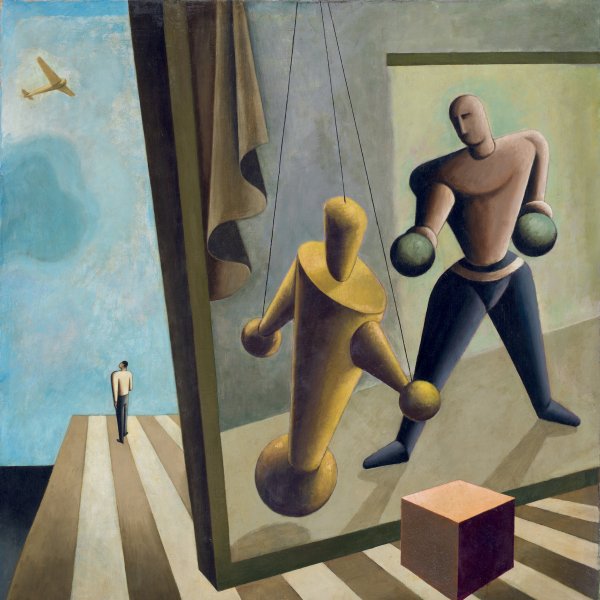Sándor Bortnyik
Marosvásárheky, 1893-Budapest, 1976
Sándor Bortnyik played an important role in the development of the Hungarian avant-garde. He began studying in Budapest in 1913 and was attracted by the style of the Fauves until 1915, when he met Lajos Kassák, the editor of MA, who invited him to become a contributor to the magazine.
In 1919, following the collapse of Béla Kun’s short-lived communist regime and the invasion of Romanian troops, Bortnyik and other artists connected with MA were forced to flee Budapest. He settled in Vienna and went on to live in Weimar from 1922 to 1924. His close contact with the Bauhaus and the Constructivist movements of the time gave rise to non-figurative works with a strong architectural component. Even so, Bortnyik refused to be identified with the Bauhaus. During this period he also worked in Kassa (now Kosice, Slovakia) and Berlin, where the Der Sturm gallery staged an exhibition of his work in 1922. In 1924 he began to develop an interest in depicting satirical scenes featuring figures framed in strange architectural settings, retaining his earlier geometric emphasis.
Bortnyik returned to Hungary in 1925. There he resumed his initial activity as a poster designer and set up a workshop which was attended, among others, by Victor Vasarely, and which he closed down in 1938 due to financial problems. In the mid-1930s Bortnyik again took up painting, influenced by a group of socialist artists established in Budapest in 1934. During the following years he promoted the publication of various books and magazines and taught at and directed the Budapest Academy of Fine Arts. At the end of his life the National Gallery of Budapest organised a retrospective of his work as a tribute to his career.
In 1919, following the collapse of Béla Kun’s short-lived communist regime and the invasion of Romanian troops, Bortnyik and other artists connected with MA were forced to flee Budapest. He settled in Vienna and went on to live in Weimar from 1922 to 1924. His close contact with the Bauhaus and the Constructivist movements of the time gave rise to non-figurative works with a strong architectural component. Even so, Bortnyik refused to be identified with the Bauhaus. During this period he also worked in Kassa (now Kosice, Slovakia) and Berlin, where the Der Sturm gallery staged an exhibition of his work in 1922. In 1924 he began to develop an interest in depicting satirical scenes featuring figures framed in strange architectural settings, retaining his earlier geometric emphasis.
Bortnyik returned to Hungary in 1925. There he resumed his initial activity as a poster designer and set up a workshop which was attended, among others, by Victor Vasarely, and which he closed down in 1938 due to financial problems. In the mid-1930s Bortnyik again took up painting, influenced by a group of socialist artists established in Budapest in 1934. During the following years he promoted the publication of various books and magazines and taught at and directed the Budapest Academy of Fine Arts. At the end of his life the National Gallery of Budapest organised a retrospective of his work as a tribute to his career.





